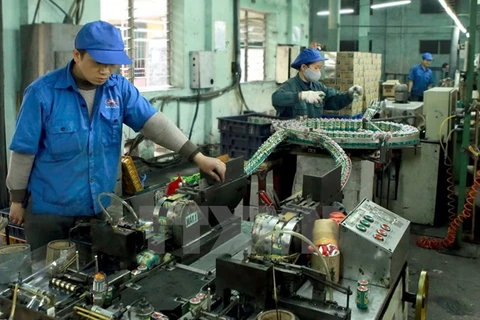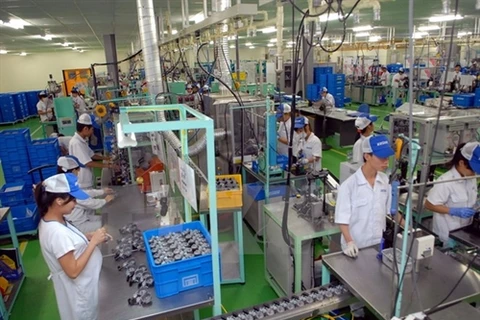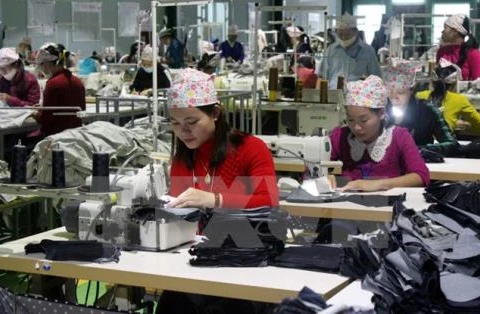 Over one million people of working age nationwide were jobless in the first quarter of this year. Nearly 200,000 of those unemployed hold university bachelors degrees or higher level credentials. (Photo:VNA)
Over one million people of working age nationwide were jobless in the first quarter of this year. Nearly 200,000 of those unemployed hold university bachelors degrees or higher level credentials. (Photo:VNA)
Hanoi (VNA) – The higher education students take, the higher the rate of unemployment they might suffer, Deputy Minister of Labour, Invalids and Social Affairs Doan Mau Diep said.
The statement refers to the more than one million unemployed of working age in the country in the first quarter of this year.
The latest labour statistics, released this week by the Institute of Labour Science and Social Affairs, revealed that since December to March this year, an additional 20,700 people are out of work.
Among the one million unemployed, the group with the highest unemployment rate was university graduates or those holding higher degrees. An estimated 190,900 graduates and degree holders, an increase of more than 35,000 people over the same period last year, cannot find work.
About 118,900 college graduates could not find jobs, an increase of over 2,000 from last year, according to released figures.
By contrast, the number of jobless intermediate school graduates witnessed a downward trend. Only about 60,200 people in this category were unemployed, a small bright spot in this quarter’s labour bulletin.
The first quarter labour information also showed that 53.29 million have jobs nationwide, a decrease of 211,120 people compared to the final quarter of last year.
Deputy Minister Diep blamed the situation for the slowing economy in the first quarter of this year, which has had a direct impact on the job market.
There has been a reduction of about 1.23 percent in Gross Domestic Product (GDP) in agriculture, forestry and seafood. This has put these sectors at the top of the list of those suffering from job losses, along with processing and manufacturing industries, as well as those firms that repair, and perform wholesale and retail sales of automobiles, motorbikes and engines.
Labour experts say that a mismatch between employer requirements and graduate skills is the main reason why degree holders are facing employment problems.
Dr. Bui The Duc, deputy head of the Party Central Committee’s Information and Education Commission, told Tien Phong (Vanguard) newspaper that more than two million labourers are working at about 300 industrial and processing zones across the majority of provinces and cities.
The training for workers remains weak while the quality and structure of human resources have yet to meet the demands of enterprises, he said.
According to domestic and foreign experts, human resources in Vietnam are of a lower quality than in many developing countries in the region, and are being out competed in the labour market.
Many businesses, especially foreign-invested ones, refuse to employ graduates and instead want to conduct training themselves as they do not trust the quality of training from educational institutions in Vietnam.
Deputy Minister Diep said that in the long term, the skills of labourers must be improved. The unemployment rate will continue to increase if the knowledge and skills of job seekers continue to be misaligned with what the market wants, he said.
Dao Quang Vinh, Director of the Institute of Labour, Science and Social Affairs, predicted that in the second quarter, 53.49 million people are expected to have jobs, an increase of only 0.4 percent compared to last quarter.
"The good news is that the unemployment rate of working age people is expected to decrease, thanks to the GDP increasing by 6.17 percent this quarter as predicted by the Central Institute for Economic Management (CIEM)," Vinh said.
He said that the processing and manufacturing industries, construction, media and communications will attract more employees.
According to Phu Huynh, an economic and labour expert from the International Labour Organisation (ILO) in the Asia-Pacific region, using the jobless rate to evaluate growth in the developing economy does not fully reflect the status of the national labour market.
Besides the unemployment rate, several other items of information should be added to the labour bulletin of Vietnam, including figures on impoverished workers, vulnerable job groups, the percentage of agriculture jobs, labour productivity and average wages, he said.-VNA
























